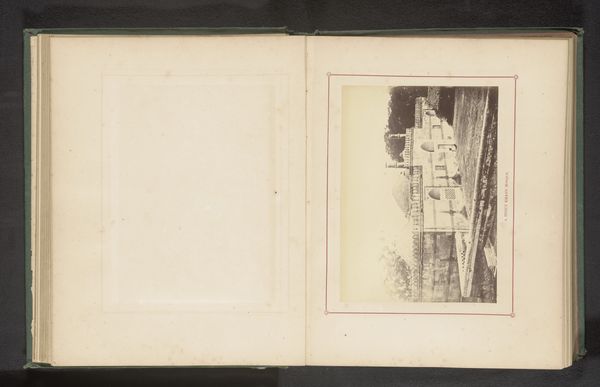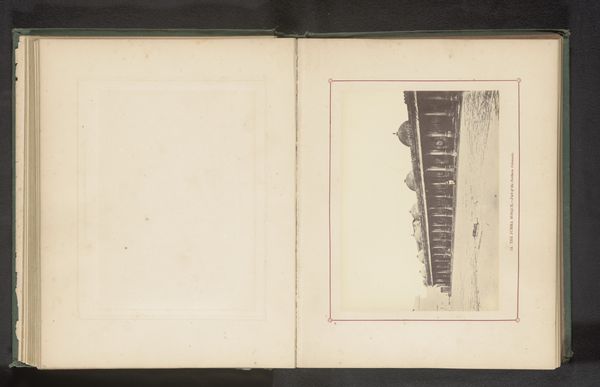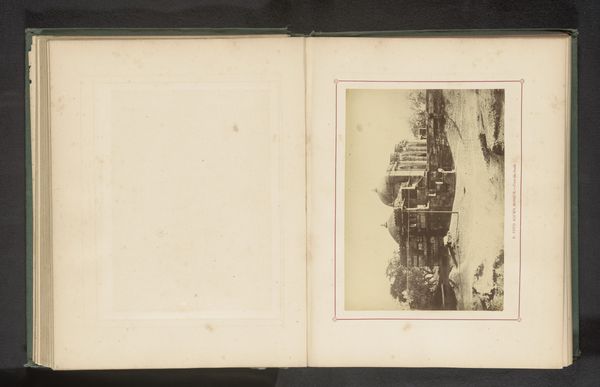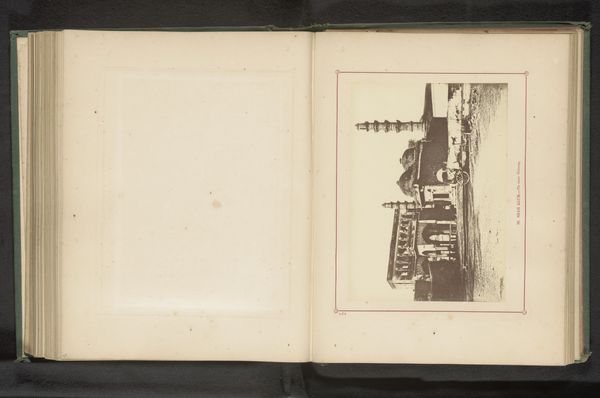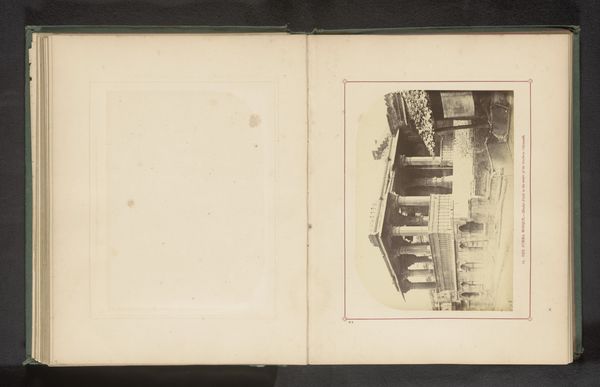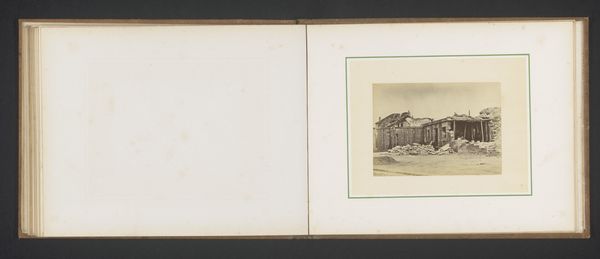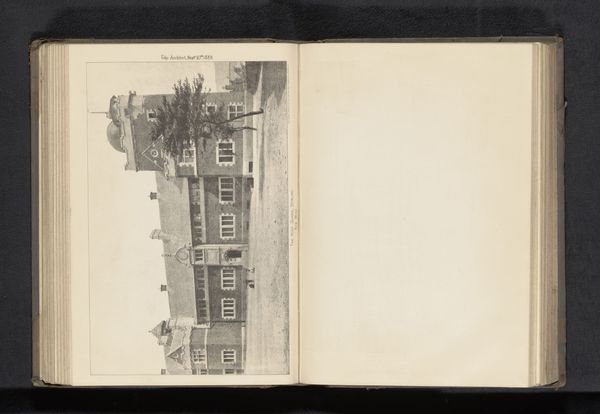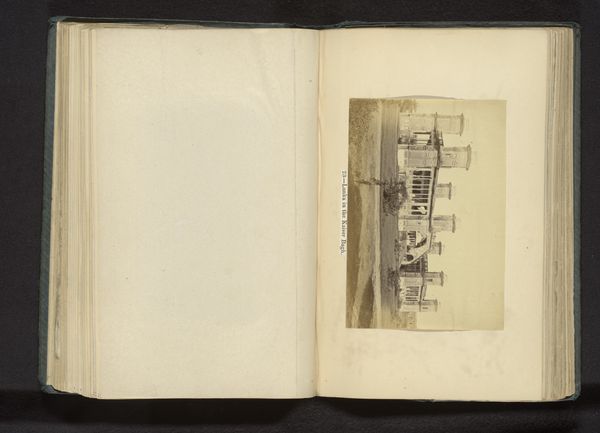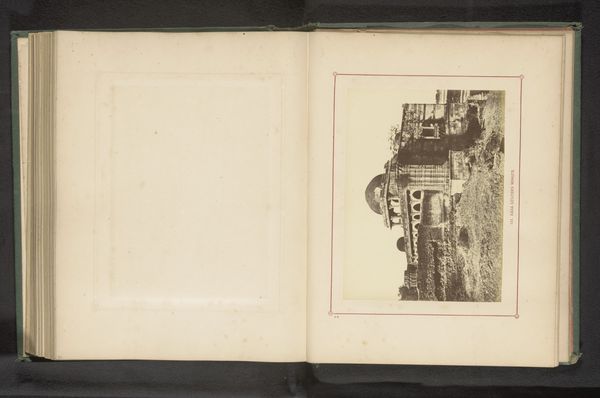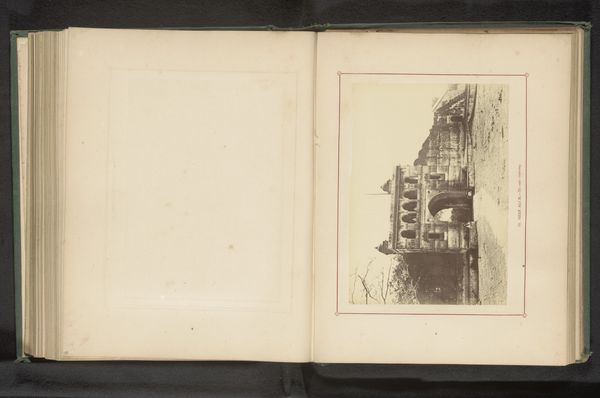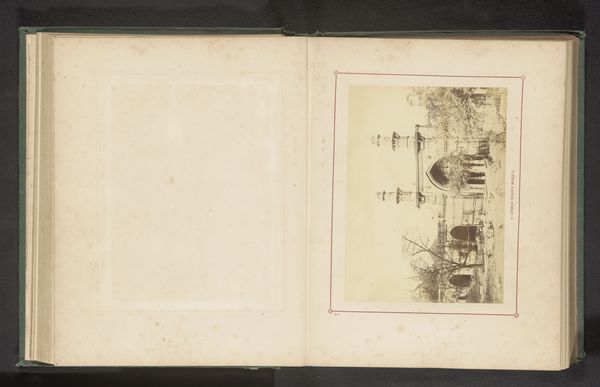
photography, albumen-print
#
landscape
#
photography
#
orientalism
#
islamic-art
#
watercolor
#
albumen-print
Dimensions: height 136 mm, width 189 mm
Copyright: Rijks Museum: Open Domain
Curator: This albumen print captures the Jama Masjid in Ahmedabad, dating back to before 1866. The photographer is Thomas Biggs. It offers a striking view of the mosque. Editor: It's strikingly stark, isn't it? The sharp lines of the architecture against what looks like a completely empty square… what sort of material processes gave it this quality? Curator: The albumen process was popular at the time for its fine detail and tonal range. Prints like these offered Europeans a glimpse into colonial India. They reflect not only the landscape but also the evolving dynamics between Britain and its territories. It was certainly made with the western consumer in mind, as evidenced by its preservation in photograph albums like this. Editor: That fine detail also allows us to see the labour involved in the mosque's construction – the hand-carved arches, the repeated structural elements... it emphasizes how the mosque was both a physical accomplishment and a symbolic representation. How it was used, consumed by the people, it depicts its history on every column and tile... It looks worn by time. Curator: Absolutely. And thinking about its reception, these images were part of a broader visual culture that, for many Europeans, exoticized and essentialized the East, shaping perceptions of Islamic architecture and life in India. This image, intended to document, ended up playing a key role in perpetuating certain visual narratives. The architecture here has, even by this image, outlived its initial viewers. Editor: Which makes you wonder about the laborers who were involved, in their vision. This print transforms physical spaces into commodities for visual consumption, really. Consider the actual work of producing these images: the travel, the processing, and the final object finding its place within a book like this...it gives the labor a place in the record as well. Curator: The history of the image is as complex as the history of the structure itself. I find it powerful to consider how photography could both bridge and widen cultural gaps. Editor: Yes, a testament to labor, perspective and preservation, material and cultural.
Comments
No comments
Be the first to comment and join the conversation on the ultimate creative platform.
